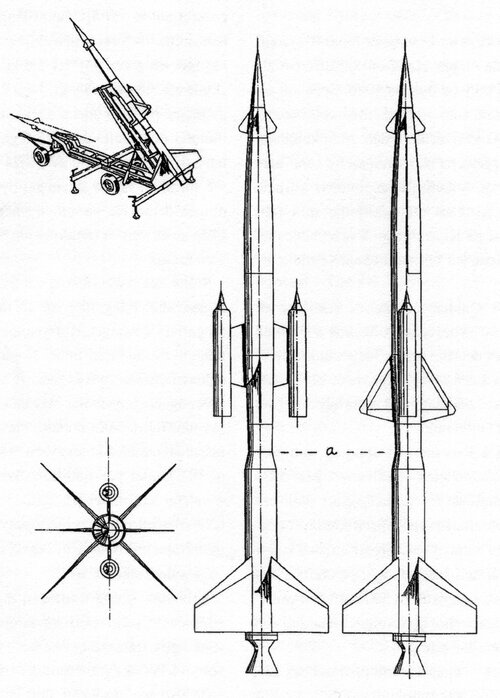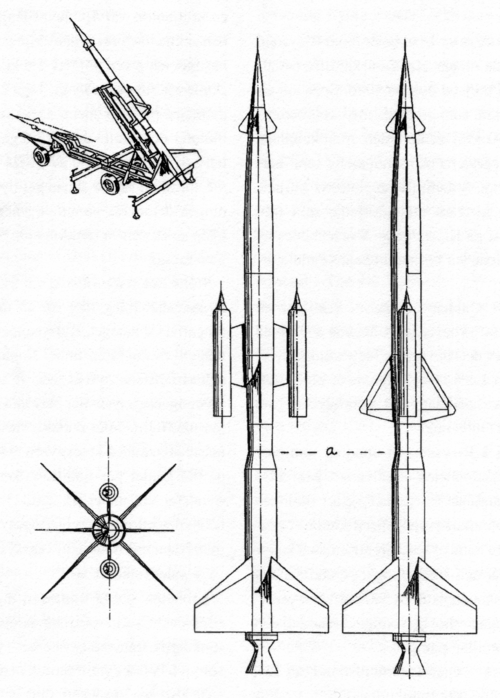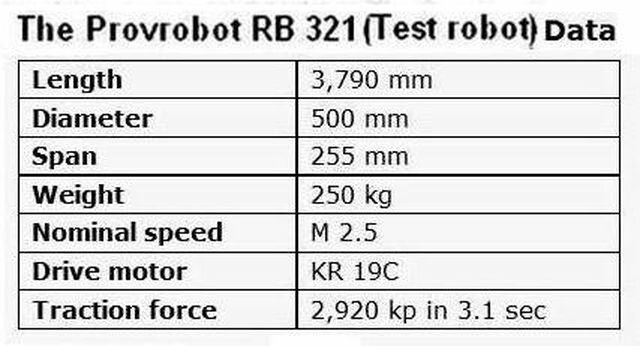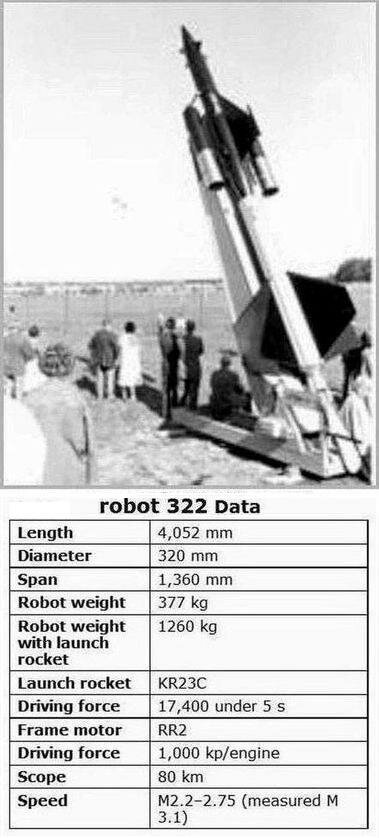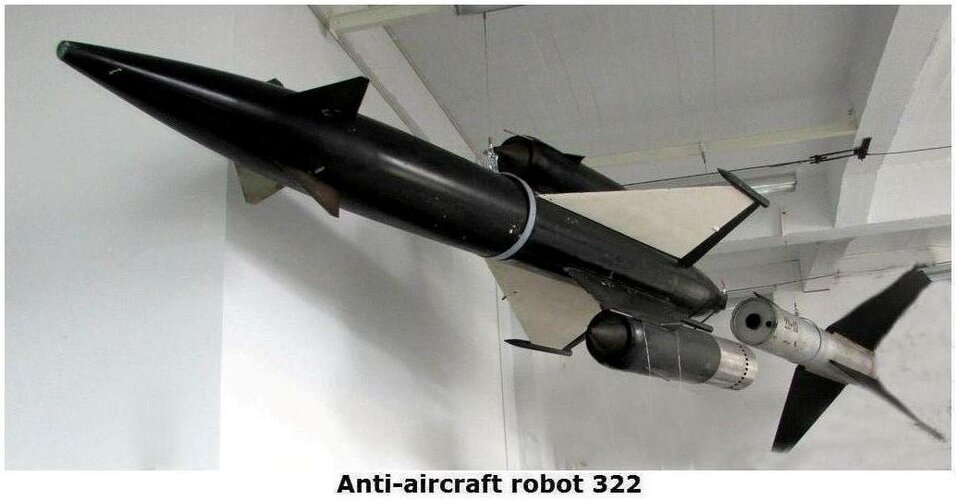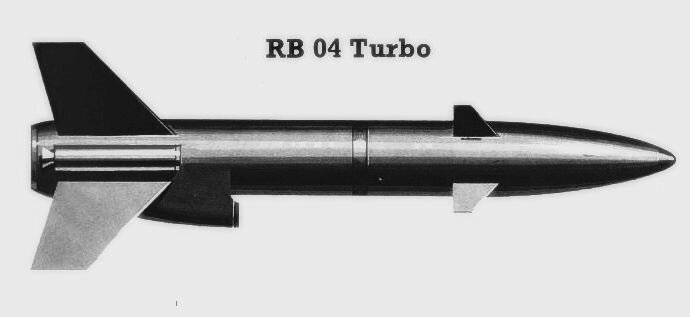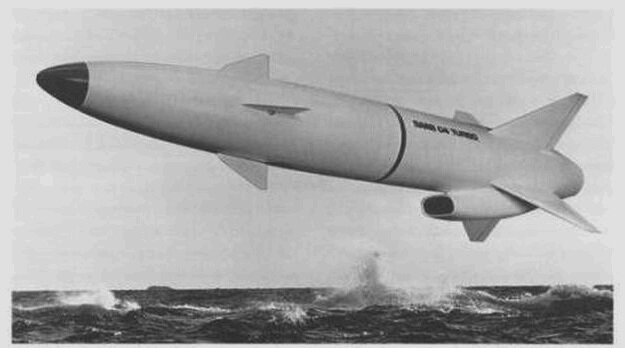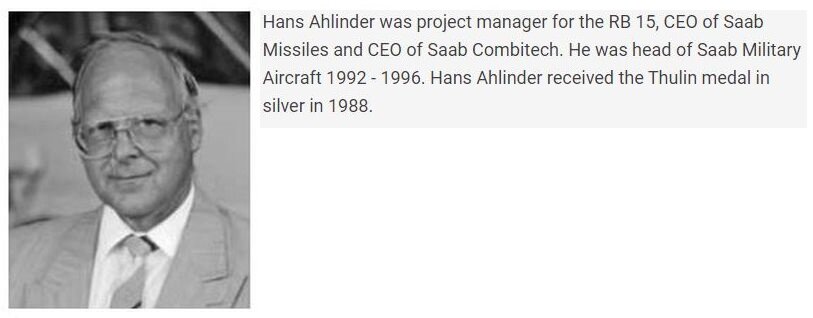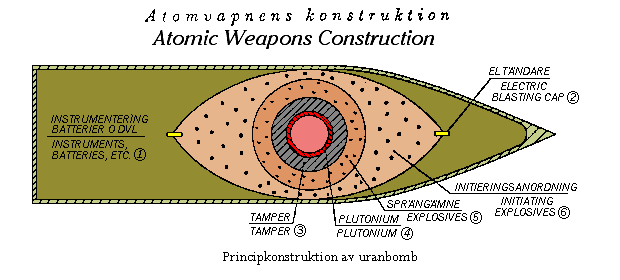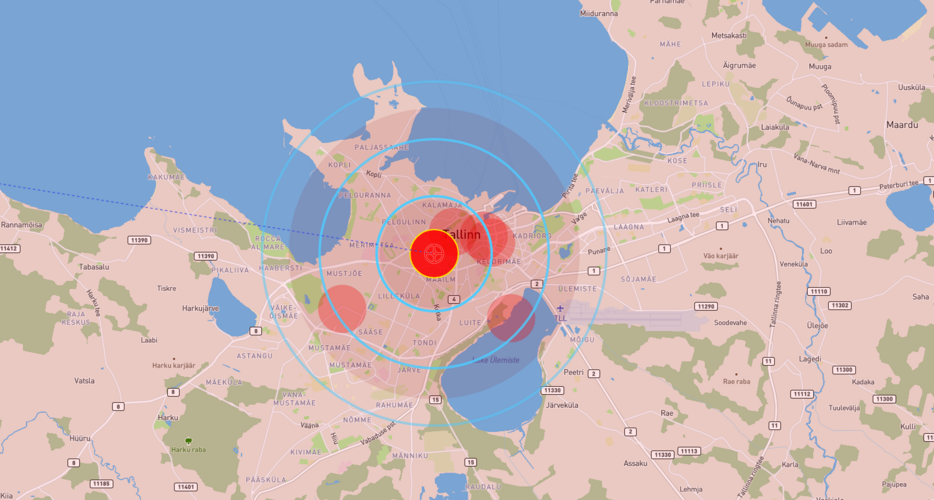- Joined
- 1 February 2011
- Messages
- 2,939
- Reaction score
- 3,624
I wonder if you guys here have more information about the various Swedish Missile and Rocker projects this fascination country developed or started developing?
I've found this swedish site providing some info and history:
as well as this Global Security.org articel:
 www.globalsecurity.org
www.globalsecurity.org
But as Global Security only allows to view only a certain amount of articles (like 5??? in a month) for free so I copied it's contents here:

Sweden was one of the first countries to attempt domestic guided missile development, with early assistance from individuals who had been involved in the German missile program. As early as 1943, some German V1 [so-called aerial torpedo] accidentally fell outside Karlskrona and in Ystad. These were, of course, cared for, and analysed with great interest. SAAB and then STOLE was early on in this, and was given the task of producing a corresponding air torpedo. The first prototypes, the RB310 and RB311 samples, were tested in 1946 in karlsborg. The evolution from V1 continued, and the first series-produced anti-ship missile became the RB 315.
The Centrala ledningen för reaktions- och raketdrift (Central Directorate for Reaction and Rocket Propulsion) held its first meeting on 08 February 1945. A number of guided missile projects were initiated in the deacde after World War II and most were quickly abandoned. These included the RB 321 air-to-air missile; RB 300, RB 301, RB 302, RB 303 and RB 304 air-to-surface missiles; the RB 310, RB 311, RB 312, RB 313, RB 315, RB 316 ship-based surface-to-surface missiles and the RB 322 surface-to-air missile. Development efforts eventually concentrated on three projects — the RB 304 air-to-surface guided missile, the RB 315 ship-based anti-ship guided missile, and the RB 321 air-to-air guided missile. The RB 321 guided missile, intended for the Air Force, had the highest priority.
Mikael Nilsson notes that "A few scant references were made to Swedish guided missiles in Ingemar Dörfer’s System 37 Viggen published in 1973. Dörfer’s book was for a long time the only Swedish scholarly work that mentioned guided missiles at all. In the non-scholarly catalogue, a short history of surface-to-air missiles could be found in Luftvärnets historia. As with so many other publications, though, it was totally void of theoretical perspective and historical analysis. Another example is the official eulogy Robot 50 år, written for the 50th anniversary of the guided missile development at the Swedish automobile and aircraft manufacturer SAAB, which for a long time was the most complete account of Sweden’s guided missile development."
Prior to November 1957, virtually nothing worthwhile could be said of Sweden's missile programs based on open sources, but on November 4 two of the longest-established "Robots" were publicly revealed. Most of the guided-weapon research had been undertaken by the Guided Weapons Bureau; in the future, however, the aircraft industry (in particular the Saab Aircraft Co.) was to handle the major part of the work.
In November 1957 Swedish officials announced the developement of a new guided missile, then being tested on two navy destoyers. According to a United Press account published in the New York Times on 04 November 1957, "The missile, known as Robot 315, is fired by a rocket and powered by a jet engine.... It could be fitted with an atomic bomb. The speed and range of the missile were not disclosed. Also being tested is a missile, Robot 304, that can be fired from a plane."
Clearly employing a body, guidance system and warhead very similar to that of the Type 304, the 315 was a surface-to surface bombardment missile of the Royal Swedish Navy. The basic requirement was formulated in 1946, and in the autumn of 1946 an intermediate development prototype designated Type 310 was test fired. Actual project-work on the 315 began in January 1949; a representative airframe was fired in July 1953 and the first complete 315 weapon was launched in January 1954. Unlike the 304, the Type 315 had cruciform wings. Launching was effected from a fairly lengthy ramp under the thrust of four inbuilt solid boost rocket motors, the nozzles of which pointed outwards at some 20 degrees from the body, in line with the trailing edges of the wings.
Cruise propulsion was effected by a pulsejet, fed from an annular intake grill close to the rocket nozzles and surrounded by a large-diameter pipe which apparently induces additional air. After the employment of the pulsejet in the V1, work was undertaken in various Western countries (and doubtless in the then Soviet Union also) to analyse and model the operating characteristics of the intermittent jet, of which there are a number of variants. The pulsing nature of its operation and the consequent pulsing thrust characteristic imposed an undesirable dynamic loading on the missile. Together with its inherently high fuel consumption, this are probably the features which accounted for its non-appearance since World War II as a missile propulsion unit. An exception is the Swedish Robot 315, a ship-borne bombardment missile (in service about 1958) which apparently employed a pulse jet.

The length was about 22-25 feet; the span of wing cruciform, about 8 feet; launching weight, over 3,000 pounds; payload, about 1,000 pounds; cruising speed, probably about 55O-600 mph, with a range of about 10 NM. Most test firing had been done from the ground-test establishment at Karlsborg, on Lake Vaettern. Two operational destroyers, Holland and Smaland, were equipped with the weapon, and the former ship conducted her first firing trials in April 1955. Robot 315 had all-weather guidance, and the complete system was coming into production at the Air Force Central Workshops, assisted by civilian subcontractors.
Mikael Nilsson traced the origins of the domestic Swedish guided missile development effort, and showed how an effective Swedish air defense presupposed the consent to American hegemony. The cooperation was established through a series of crucial decisions made by the Swedish government to tacitly give its consent to American hegemony in European and world affairs. This process started in 1948 with the Swedish participation in the Marshall Plan and can be considered to have been finalized in 1952 when President Truman made Sweden eligible for reimbursable armaments deliveries from the United States.
In FY 1959 Sweden purchased $10.2 million worth of Sidewinder missiles from the United States. In December 1959 Sweden expressed interest in purchasing in the United States or in manufacturing in Sweden certain advanced U.S. weapons. This confirmed that Sweden had become a trusted and close ally of the U.S. in the Cold War in Europe. The efforts to develop Swedish-made guided missiles for the Swedish Army and Air Force 1945–1962 were stymied by the lack of funding and know-how. By 1962 the Swedish RB 304 air-to-surface missile and the RB 315 ship-based anti-ship missile were in operational service, the later as the Saab RBS 15 [3xx denotes a trials missile, so the 315 became 15 when in service]. Development and evaluation of the RBS 15 Mk 3 version was completed in December 2008. About the only thing it seems to have in common with the RB 315 of the 1950s is the designation.
I've found this swedish site providing some info and history:
as well as this Global Security.org articel:
Swedish Nuclear Weapons
But as Global Security only allows to view only a certain amount of articles (like 5??? in a month) for free so I copied it's contents here:
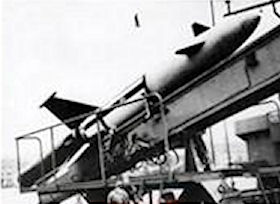
Sweden was one of the first countries to attempt domestic guided missile development, with early assistance from individuals who had been involved in the German missile program. As early as 1943, some German V1 [so-called aerial torpedo] accidentally fell outside Karlskrona and in Ystad. These were, of course, cared for, and analysed with great interest. SAAB and then STOLE was early on in this, and was given the task of producing a corresponding air torpedo. The first prototypes, the RB310 and RB311 samples, were tested in 1946 in karlsborg. The evolution from V1 continued, and the first series-produced anti-ship missile became the RB 315.
The Centrala ledningen för reaktions- och raketdrift (Central Directorate for Reaction and Rocket Propulsion) held its first meeting on 08 February 1945. A number of guided missile projects were initiated in the deacde after World War II and most were quickly abandoned. These included the RB 321 air-to-air missile; RB 300, RB 301, RB 302, RB 303 and RB 304 air-to-surface missiles; the RB 310, RB 311, RB 312, RB 313, RB 315, RB 316 ship-based surface-to-surface missiles and the RB 322 surface-to-air missile. Development efforts eventually concentrated on three projects — the RB 304 air-to-surface guided missile, the RB 315 ship-based anti-ship guided missile, and the RB 321 air-to-air guided missile. The RB 321 guided missile, intended for the Air Force, had the highest priority.
Mikael Nilsson notes that "A few scant references were made to Swedish guided missiles in Ingemar Dörfer’s System 37 Viggen published in 1973. Dörfer’s book was for a long time the only Swedish scholarly work that mentioned guided missiles at all. In the non-scholarly catalogue, a short history of surface-to-air missiles could be found in Luftvärnets historia. As with so many other publications, though, it was totally void of theoretical perspective and historical analysis. Another example is the official eulogy Robot 50 år, written for the 50th anniversary of the guided missile development at the Swedish automobile and aircraft manufacturer SAAB, which for a long time was the most complete account of Sweden’s guided missile development."
Prior to November 1957, virtually nothing worthwhile could be said of Sweden's missile programs based on open sources, but on November 4 two of the longest-established "Robots" were publicly revealed. Most of the guided-weapon research had been undertaken by the Guided Weapons Bureau; in the future, however, the aircraft industry (in particular the Saab Aircraft Co.) was to handle the major part of the work.
In November 1957 Swedish officials announced the developement of a new guided missile, then being tested on two navy destoyers. According to a United Press account published in the New York Times on 04 November 1957, "The missile, known as Robot 315, is fired by a rocket and powered by a jet engine.... It could be fitted with an atomic bomb. The speed and range of the missile were not disclosed. Also being tested is a missile, Robot 304, that can be fired from a plane."
Clearly employing a body, guidance system and warhead very similar to that of the Type 304, the 315 was a surface-to surface bombardment missile of the Royal Swedish Navy. The basic requirement was formulated in 1946, and in the autumn of 1946 an intermediate development prototype designated Type 310 was test fired. Actual project-work on the 315 began in January 1949; a representative airframe was fired in July 1953 and the first complete 315 weapon was launched in January 1954. Unlike the 304, the Type 315 had cruciform wings. Launching was effected from a fairly lengthy ramp under the thrust of four inbuilt solid boost rocket motors, the nozzles of which pointed outwards at some 20 degrees from the body, in line with the trailing edges of the wings.
Cruise propulsion was effected by a pulsejet, fed from an annular intake grill close to the rocket nozzles and surrounded by a large-diameter pipe which apparently induces additional air. After the employment of the pulsejet in the V1, work was undertaken in various Western countries (and doubtless in the then Soviet Union also) to analyse and model the operating characteristics of the intermittent jet, of which there are a number of variants. The pulsing nature of its operation and the consequent pulsing thrust characteristic imposed an undesirable dynamic loading on the missile. Together with its inherently high fuel consumption, this are probably the features which accounted for its non-appearance since World War II as a missile propulsion unit. An exception is the Swedish Robot 315, a ship-borne bombardment missile (in service about 1958) which apparently employed a pulse jet.
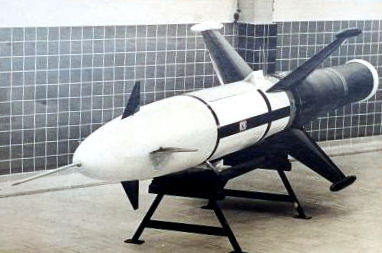
The length was about 22-25 feet; the span of wing cruciform, about 8 feet; launching weight, over 3,000 pounds; payload, about 1,000 pounds; cruising speed, probably about 55O-600 mph, with a range of about 10 NM. Most test firing had been done from the ground-test establishment at Karlsborg, on Lake Vaettern. Two operational destroyers, Holland and Smaland, were equipped with the weapon, and the former ship conducted her first firing trials in April 1955. Robot 315 had all-weather guidance, and the complete system was coming into production at the Air Force Central Workshops, assisted by civilian subcontractors.
Mikael Nilsson traced the origins of the domestic Swedish guided missile development effort, and showed how an effective Swedish air defense presupposed the consent to American hegemony. The cooperation was established through a series of crucial decisions made by the Swedish government to tacitly give its consent to American hegemony in European and world affairs. This process started in 1948 with the Swedish participation in the Marshall Plan and can be considered to have been finalized in 1952 when President Truman made Sweden eligible for reimbursable armaments deliveries from the United States.
In FY 1959 Sweden purchased $10.2 million worth of Sidewinder missiles from the United States. In December 1959 Sweden expressed interest in purchasing in the United States or in manufacturing in Sweden certain advanced U.S. weapons. This confirmed that Sweden had become a trusted and close ally of the U.S. in the Cold War in Europe. The efforts to develop Swedish-made guided missiles for the Swedish Army and Air Force 1945–1962 were stymied by the lack of funding and know-how. By 1962 the Swedish RB 304 air-to-surface missile and the RB 315 ship-based anti-ship missile were in operational service, the later as the Saab RBS 15 [3xx denotes a trials missile, so the 315 became 15 when in service]. Development and evaluation of the RBS 15 Mk 3 version was completed in December 2008. About the only thing it seems to have in common with the RB 315 of the 1950s is the designation.
Last edited:

